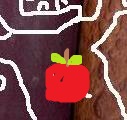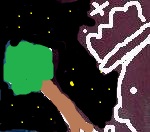‘Bury that red
bandana and stick, that banjo; this is your
country, close one eye and be king.’
– Derek Mahon, ‘Ecclesiastes’ (1970).
‘I was one of us, at ease, so long as I passed
my voice into theirs’
– Daljit Nagra, ‘The Man Who Would be English’ (2007)
Like a lot of debut collections, Rishi Dastidar’s Ticker-tape is a miscellany, jumping from political commentary to literary critique to romantic flirtation, but what unites it most clearly is Dastidar’s obvious delight in building unusual lines and phrases, letting the most vivid bursts of his imagination light the way. The book overflows with complex, often discordant flavours:
‘the failure barnacles that make
the soul a marine carapace,
indulgently leaking toward
the histories you can’t outsail’ (‘On enthusiasm’)‘And the quadriga’s thundering embrace came down to hold you
And the rabona’s blaugrana arc came down to meet you
And the collated astronauts came down to meet you
And the cities of bespoke newsprint folded down to meet you’ (‘Trunk shavasana’)
The title poem turns the effect up to eleven:
‘my miraculous unions, my startling tomb, my crowned emptiness,
my frozen divination, my comedic impudence, my naked obsession,
my vulnerable esophagus, my dismissed biology, my blurred impudence […]my grandmaster apologies, my godfathered regrets,
my impermanent staring, my grand projets,
my memorials of war, my fired bunting, my gadabout dancing’ (‘Ticker-tape’)
In an interview on this blog in 2017, Dastidar described how he was ‘swinging for the fences’ in Ticker-tape, a phrasing that feels so apt for the book at large, with its grand, physical gesture, its transatlantic idiom (that fence ain’t around a cricket pitch), and, most importantly, its embrace of the possibility of failure. Sometimes you hit a home run, sometimes you strike out: what matters, in Ticker-tape, is holding nothing back. I’m still fond of the book, four years on, because even where it falls short of its own grand ambitions, its flaws are unmistakably, joyfully, unique.
At first blush, Saffron Jack seems in continuity with its predecessor: both books feature cover illustrations by the poet’s sister, the artist Ria Dastidar, this time a colourful mockery of the Belgian king Leopold II with pencils up his nose and cartoon monsters worrying at his epaulettes. Like numerous poems in Ticker-tape, the book foregrounds its formal ingenuity, sometimes amplifying the poem’s special effects, sometimes acting like a protective layer, keeping the deeper meaning quietly removed from the reader. Saffron Jack’s narrator also seems familiar: he is winningly self-deprecating, a gregarious, loquacious host just as keen to volunteer his neuroses as his regal ambitions. What’s entirely new in Dastidar’s work, however, is its feature-length dramatic situation.
Stephanie Sy-Quia expressed this perfectly when she described Saffron Jack as a ‘chimera’: unlike Dastidar’s debut, it is ‘a long narrative poem, a one-man play with modest stage directions, and a DIY manual for How to Set Up and Rule a Nation’. The book covers the final days of an unnamed narrator, who has hopped on a Eurostar out of London, and taken a cab to a town on the border of Belgium and the Netherlands, where war has broken out over a centuries-old diplomatic technicality that left tiny parcels of land legally unclaimed, ‘a gap in the crack of history’. Here, he establishes a nation, population: one. His first lines are both self-deprecating and wholly committed to the bit:
‘1. You polish it every night
1.1. No, not that.
1.2. The crown.
1.2.1. Every night.’
These lines also establish the particular flavour of clown the narrator acts in these opening salvos. He speaks in legal-ish clauses, perhaps to himself, perhaps to an imagined posterity, but with all the self-indulgent puffery of the corporate-political world he (claims to have) previously inhabited. The tone in these passages is mostly light, playing around with kingship in the abstract, a fabular approach to the meaning of authority (‘someone comes along one day and says / 7.2.1. ‘Look, look, I can see some rust!’ // 8. And then it is all over’). The narrator might be a megalomaniac, but he’s a goofy one, a harmless one, a dictator your parents could joke about, with only the occasional discordant note to break the breeziness:
’24. This [job] gave you a lot of freedom –
24.1 At the expense of other people
24.1.1. Sorry, subjects […]
24.2. It was well past time you took a bit of freedom
24.2.1. For you.
24.3. Because if you didn’t
24.3.1. No one else would do it for you.’
If you’ve ever actively listened to any given tory, you’ll recognise the chillingly casual step into totalitarianism, the cool tallying of my freedom against yours. Dastidar’s narrator has entirely absorbed this logic, and quite happily regurgitated it, but it’s to the poet’s credit that the violence of this passage didn’t properly unnerve me until a second reading, hiding in plain sight. The substance of what the narrator is actually devising here, quite beside its chummy presentation, lurks at the back of the mind, like a droning, distorted cello deep in the mix of an RBS advert.
Not long after this comes the first breakdown of the book’s legislative format. Until this point, the narrator has spoken in the loose, chatty, but structured declarations noted above, but here the speaking voice suddenly lets loose, discussing Kipling (and John Huston)’s The Man Who Would Be King:
‘You know, it’d also be cool to just control somewhere, especially when you’ve felt that you’ve never fitted in wherever the where is you’re from.’
Kipling’s story features two English soldiers (played by Sean Connery and Michael Caine in the 1975 movie), who decide British-occupied India is too ‘regularised’ – read: ruled by law – and march off into the Afghan hinterland to find a people who will crown them, at gunpoint if necessary. Though Connery winds up executed and Caine miraculously survives crucifixion, the narrator in Saffron Jack, much like the movie’s promotional material: “Adventure in all its glory!”, sees only the triumph, the will to power, the fantasy of it all. The book’s staccato flourish gives way to a rapt venting of the id, the narrator’s vision bubbling to the surface as an imaginary tyrant hands him his rightful crown:
‘it’s only when he looks at you with the crown in one hand and imploring gesture being made by the other, and his eyes are watery and pleading and hopeful and hopeless and scared, and the crowd suddenly hush as they see where he’s looking […] and then you’re almost blown back by this gust or noise, this rush of love or fear and hope and expectations and dreams, all in this one blast, this one expansion of emotion.’
On one hand, this is still ludicrous. The narrator is filming a movie in his mind, starring himself as Sean Connery as dictator, alone in an empty house. But Saffron Jack’s narrative conceit – that all of this happens with mere minutes before the real authorities take it all away – simmers in the background, gives the passage a cold, horrible, painful edge, the fantasy of power undercut by the invasion of the real thing.
There is just one other moment in the book that breaks out of its usual rhythm, one that adds depth and context to the first. It’s probably not coincidental that this second break comes on the heels of the narrator unfurling the royal standard of his new microstate, a union flag coloured in ‘saffron and gold and red and brown and green’. He seems pleased at first, reasoning:
‘137. Well, why not? It is mine as much as it is yours.
137.1. You just thought it could be
137.2. Spiced up a little.’
As if the awful Blairite pun has prompted a moment of clarity, this begins a downward spiral into the book’s second moment of outpouring, as he reflects on a Britain that, despite his attempts to assimilate – ‘129.3. You have got reconciled to the fact that you could never, still cannot, digest your mother’s cooking […] 129.3.2 You cannot help but take it as metaphor.’ – never quite ‘loved [him] back’. This leads in turn to his telling, almost re-experiencing, a racist assault which feels too viscerally upsetting to reprint at any length. It is the polar opposite to the earlier passage, an all-too-real plea for safety, sanctuary, solitude:
‘your lungs coming out of your mouth, your eyes coming out of your tears, praying to a god you don’t believe in that no one knows you are here’
The bitterest punchline is how the mechanisms of state interpret all this, deciding:
‘your black eyes, your fear, are only worth a fine of £150.
144.2.1. Which does not even get fucking paid anyway.’
It’s here that the last vestiges of the book’s bonhomie are left finally aside. The myths and contradictory logics of white nationhood are laid out plainly, in full knowledge that their veracity matters less than their utility:
‘167.5.1. […] Do you really think a passport matters? Do you really think being born here matters? Do you really think it’s that easy to belong? Do you think 300 years of ownership provided us with any duty of care?’
Perhaps the narrator of Saffron Jack has assimilated too well: he has internalised the mores of empire to such an extent that the invasion and occupation of foreign, sovereign land is the only reasonable response. Unlike Kipling’s soldiers, however, his goal is, ultimately, not domination of others but salvation of the self: to escape the empire, he reasons, he must become an empire.
Saffron Jack’s last pages are characterised by a kind of bleak, resigned clarity, one I still find difficult to read from a poet who, in that 2017 interview I mentioned earlier, quite accurately described his aesthetic at the time:
‘I think I’m an optimist – not necessarily natural but I tend to a more upbeat, rosier view of things generally […] I’m interested in the extent to which poems can be vehicles towards the sunlit uplands, convey joy as much as they do the blacker, deeper moments.’
Compare to these lines toward the end of Saffron Jack:
‘What has been driving you on has been nothing noble. It has been vanity. Vicious vanity, venal vanity. […]
191. You did not create this to light a path for others, or build a shining city on a hill. To be a guideland. You did it so you could feel you were the hero of your own story.’
Even allowing for the poem’s persona, it’s hard not to trace an arc between these sentiments alongside the political realities this country has openly embraced in the past several years, the ideals it has long since stopped even pretending to value.
Derek Mahon’s poem ‘Ecclesiastes’, quoted at the top of this essay, follows from the eponymous book of the Bible which declares all human struggle to be ‘Vanity of vanities’. In Mahon’s poem, the speaker looks at the repressive, politically stunted world of 1970s Belfast and considers how easy it would be to betray his principles in exchange for power, to ‘close one eye and be king’. Dastidar’s attitude to Britain feels similarly jaundiced, but with the additional pain of knowing that even this act of profitable self-negation was never a possibility: before the narrator even appears on stage, the voices of imperial power are declaring an end to his reign.
It’s difficult to draw a neat conclusion on a book that repeats, several times, ‘And if you are waiting for a moral, do not’. Saffron Jack is a strange, sad book, and I’m struck by its refusal to offer an ‘upbeat, rosy’ ending, when it’s clear from Ticker-tape that this is, or was, a mainstay of Dastidar’s aesthetic. Saffron Jack knows the nation state is ‘as much an invention as the wheel, as jelly beans’, and that the myth of British racial purity is delusional, but it also knows the transparency of it all is part of the cruelty, and the cruelty is part of the point, and optimism alone is no protection. It’s this turn that makes Saffron Jack so fascinating to me: like Dastidar’s debut, it’s ambitious and generous, and where it is flawed it is flawed in a way that’s utterly unique, and, despite everything, there’s a sliver of joy in that. Thanks for reading.















